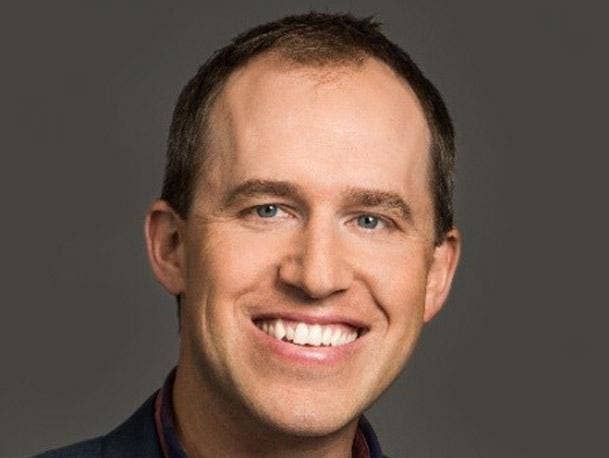Salesforce Layoffs: Poor Earnings, CEO Departure, Hiring Strategy Led To Massive Cuts
CRN breaks down the five important pieces that led up to Salesforce massive layoffs, which will see over 7,000 Salesforce employees terminated.

The writing may have been on the wall ahead of Salesforce’s massive round of layoffs today, which will likely see over 7,000 Salesforce employees terminated this month.
From the recent abrupt resignation of co-CEO Bret Taylor and the sluggish sales results during Salesforce’s most recent quarterly earnings, to recent statements made by new investor Starboard Value, there were many signs pointing to a potential large employee layoffs in 2023 for the San Francisco-based software giant.
“The environment remains challenging and our customers are taking a more measured approach to their purchasing decisions,” said Salesforce co-CEO Marc Benioff in a letter to employees today. “With this in mind, we’ve made the very difficult decision to reduce our workforce by about 10 percent, mostly over the coming weeks.”
“Within the next hour, employees who are initially affected by this decision will receive an email letting them know,” Benioff said.
[Related: Salesforce To Lay Off 7,000 Employees: ‘Hired Too Many People’]
Salesforce Layoffs
Salesforce announced today that it will reduce its workforce by 10 percent over the coming weeks.
The CRM specialist had over 73,500 employees as of January 2022, meaning that more than 7,000 employees will be fired.
In addition, Salesforce also plans to close several offices.
Salesforce said the overall goal of employee layoffs and office closures is to reduce operating costs, improve operating margins and continue advancing the commitment to profitable growth.
“I’m grateful for every single one of you who has contributed to our continued success as a company, and the hard work and sacrifices you have made to generate success for our hundreds of thousands of customers,” said Salesforce co-CEO Benioff. “You’ve built our company—for all of our stakeholders — and you’ve shown incredible resilience every step of the way.”
CRN breaks down the five signs leading up to today’s massive employee layoffs at Salesforce that foreshadowed the more than 7,000 terminations.

Salesforce Grew Headcount By 32 Percent From October 2021 to October 2022
Salesforce increased its total employee headcount by 32 percent from October 2021 to October 2022 due to its high demand from customers, according to a U.S. Securities and Exchange Commission filing by Salesforce in October.
“We have increased our headcount by 32 percent since October 31, 2021 to meet the higher demand for services from our customers, and our fiscal 2023 acquisition of Traction on Demand also contributed to this increase,” said Salesforce in the filing.
From Oct. 2021 to Oct. 2022, Salesforce said its research and development headcount increased by 11 percent “in order to improve and extend our service offerings, develop new technologies and integrate acquired companies.”
In that same timeframe, Salesforce said the company increased its marketing and sales headcount by 11 percent, “primarily due to hiring additional sales personnel to focus on adding new customers and increasing penetration within our existing customer base.”
Salesforce also increased its general and administrative headcount by 7 percent from Oct. 2021 to Oct. 2022, “as we added personnel to support our growth.”
The pandemic-fueled technology boom of 2020 and 2021 didn’t extend throughout 2022. In fact, many IT companies of all shapes and sizes conducted layoffs mostly during the second half of 2022.
“As our revenue accelerated through the pandemic, we hired too many people leading into this economic downturn we’re now facing, and I take responsibility for that,” said Benioff.

Salesforce Only Grows 14 Percent In Latest Earnings
For its latest financial quarterly earnings, Salesforce generated revenue of $7.8 billion, representing an increase of 14 percent year over year.
The company’s 14 percent sales increase during its third fiscal quarter, which ended Oct. 31, represented one of Salesforce’s lowest sales growth quarters in years. For example, Salesforce increase revenues by 22 percent year over year to $7.7 billion during its second fiscal quarter 2022.
Salesforce operating expenses increased dramatically during 2022.
Total cost of revenue increase from roughly $5 billion to $6.3 billion, from the nine months ending October 31, 2021, compared to the nine months October 2022.
Total operating expenses for the nine months ending October 31, 2022, reached over $16 billion, compared to $13.4 billion in total operating expenses for the nine months ending Oct. 31, 2021.
This means Salesforce operating expenses increase by several billions of dollars during 2022 compared to 2021.

Starboard Value Claims Stake In Salesforce; ‘They Haven’t Been As Focused On Operating Margins As We Think They Should Be’
A key move that could have forced Salesforce’s hand to let go of 10 percent of its workforce, is when activist investment firm Starboard Value bought a stake in Salesforce in late 2022.
The New York-based investment firm published a presentation on its website in October about its position in Salesforce.
“As growth has slowed, the Company has not yet produced margins expected from its leadership position” in customer relationship management (CRM), Starboard said at the time.
“Salesforce has not realized the benefits of operating leverage over the last several years, and the Company has generated significantly lower incremental margins than peers” Oracle, Microsoft, Adobe, Intuit, SAP, Workday and ServiceNow, according to Starboard.
Starboard founder Jeff Smith told CNBC in late 2022 that he and his firm want to see Salesforce focus more on operating margins and improving value for shareholders.
“They’re not dropping as much to the bottom line. They haven’t been as focused on operating margins as we think they should be,” Smith said.

Co-CEO Bret Taylor Resigns
After only one year into his role of Salesforce’s co-CEO, Bret Taylor abruptly announced his resignation in November.
“After a lot of reflection, I’ve decided to return to my entrepreneurial roots,” said Taylor in his resignation statement. “Salesforce has never been more relevant to customers, and with its best-in-class management team and the company executing on all cylinders, now is the right time for me to step away.”
After five years at Salesforce, Taylor was promoted from president and chief operating officer (COO) in November 2021. Taylor joined Salesforce in 2016 with the $750 million acquisition of Quip. He previously worked at Facebook for three years, leaving in 2012 with the title of chief technology officer.
In fiscal year 2022, Taylor received total compensation of $22.8 million, approximately 125 times that of the median employee. He will officially exit his role later this month on Jan. 31, 2022.

Stewart Butterfield And Other Top Execs Leave
Last month, Stewart Butterfield announced he would be leaving Salesforce as the head of its Slack division just days after co-CEO Taylor said he would also be leaving the company. Butterfield was the CEO and co-founder of Slack, which Salesforce bought in 2021 for a whopping $27 billion.
In another major Salesforce executive resignation in December, Tableau Software CEO Mark Nelson announced his exit from the company.
Additionally, Salesforce’s former president and Chief Revenue Officer Gavin Patterson announced in November that he will be leaving the company.
Other top executive who recently exited Salesforce include Andy Kofoid, former president of North America; Sean Alpert, former senior vice president of marketing; Rob Ferguson, former executive vice president of Sales; Steven Tamm, a longtime chief technology officer; and Tableau’s channel chief Julie Bennani.

Salesforce Lays Off At Least Several Hundreds Of Employees In October, November
In November, Salesforce cut at least several hundred employees due to sales performance, the company said.
“Our sales performance process drives accountability,” said Salesforce in a statement to CRN at the time. “Unfortunately, that can lead to some leaving the business, and we support them through their transition.”
News outlets in November reported the total number of layoffs ranged from several hundreds of employees to upward of 2,500 employees.
Before the larger November layoffs, CRN discovered that Salesforce laid off around 100 recruiters on October.
“[Salesforce] ended contracts with some temporary recruiting contractors” since many of the company’s departments will not be hiring for the rest of its fiscal year, a spokesperson confirmed to CRN in October. “While limited hiring continues, most departments have reached their hiring goals for the fiscal year.”
The layoffs in late 2022 was only a small taste of things to come in 2023.